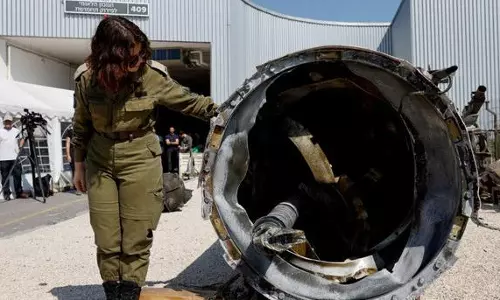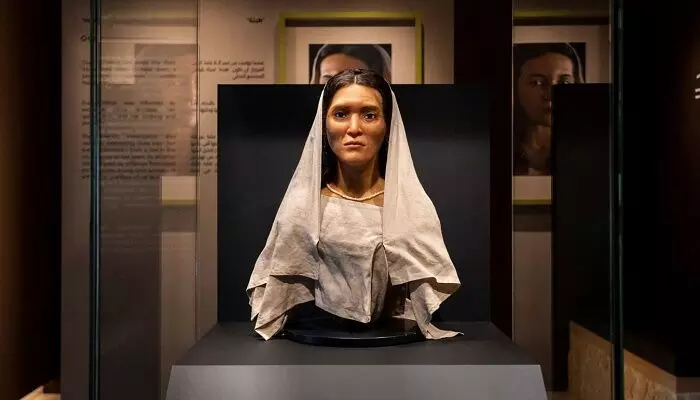
Saudi Arabia unveils reconstructed face of a 2,000-year-old Nabataean woman, a first of its kind
text_fieldsSaudi Arabia has unveiled a reconstructed face of a Nabataean woman, who lived more than 2,000 years ago.
The reconstruction, a first of its kind, has gone on display to the public, after several years of work by historians and archaeologists, merging scientific input and artistic flair.
Hinat, as she has been named, looks real and is represented as a lifelike bust made from silicone, with pierced ears and artificial hair individually threaded into her scalp, according to The National.
The Nabataeans were part of an ancient Arab civilisation that lived in northern Arabia and the Levant over 2,000 years ago. The ancient Jordanian city of Petra was the capital of the kingdom, according to CNN.
Hinat was discovered in 2008 in a tomb in Hegra, a UNESCO World Heritage site, along with the remains of 69 others, her skeleton, nearly complete.
The UK-based project was funded by Royal Commission for AlUla and the complex reconstruction began in 2019.
What's really interesting is when we think of the Nabataeans, we think of monuments and we think of scale and these feats of architecture. What this project has enabled us to do is narrow down to an individual, which gives us an insight in a very different way," Leila Chapman, narrative experience expert at the Royal Commission for AlUla, told The National.
"It tells us Hegra wasn't just a place of tombs, but a vibrant place where people lived and worked and died. It's lovely to be reminded," she added.
A team of experts rebuilt bone fragments found in the tomb to create an image of her using ancient data. A 3D printer was then used to sculpt the face of the woman, as described by CNN.
"The Nabataeans are a bit of a mystery: We know a lot, but at the same time we know very little because they didn't leave any literary texts or records. Excavating this tomb was a wonderful opportunity to learn more about their idea of the afterlife," Archeologist Laila Nehme, the director of the project, told National Geographic.
Experts said they were aware that the project involved human remains, so it was carried out in a respectful way, including carrying out a CAT scan of Hinat's skull.
The city of Hegra, which became the first World Heritage site in Saudi Arabia, was a centre on the incense trade route, which took in regions such as the Mediterranean, North Africa, the Arabian peninsula and India.
























